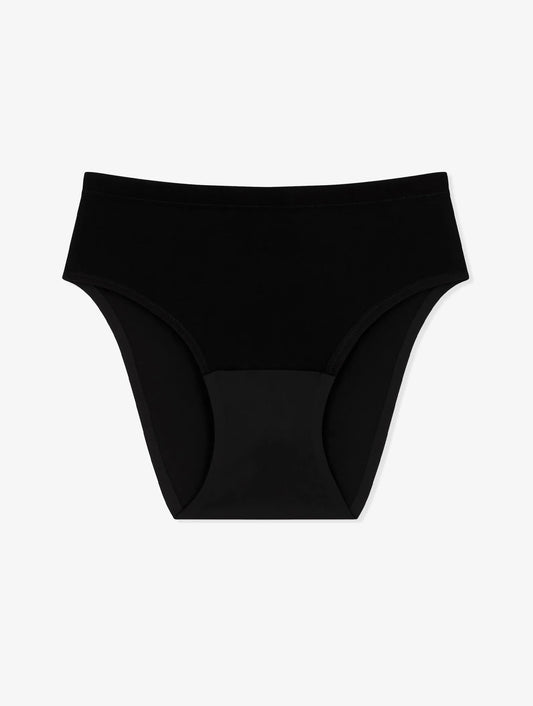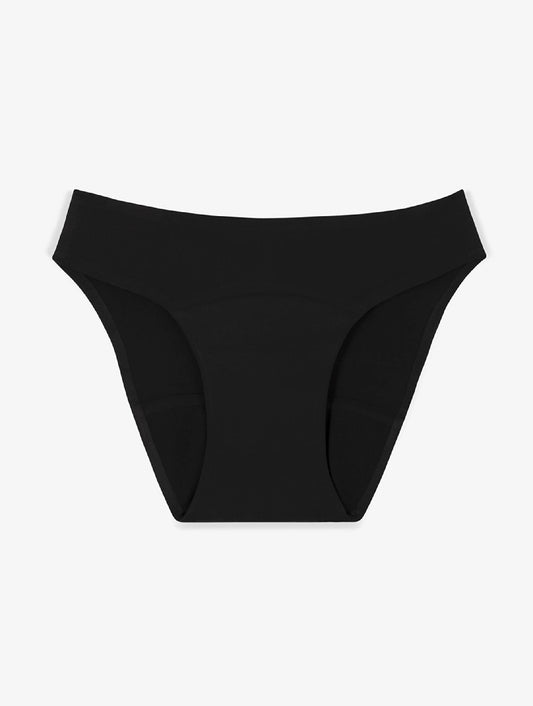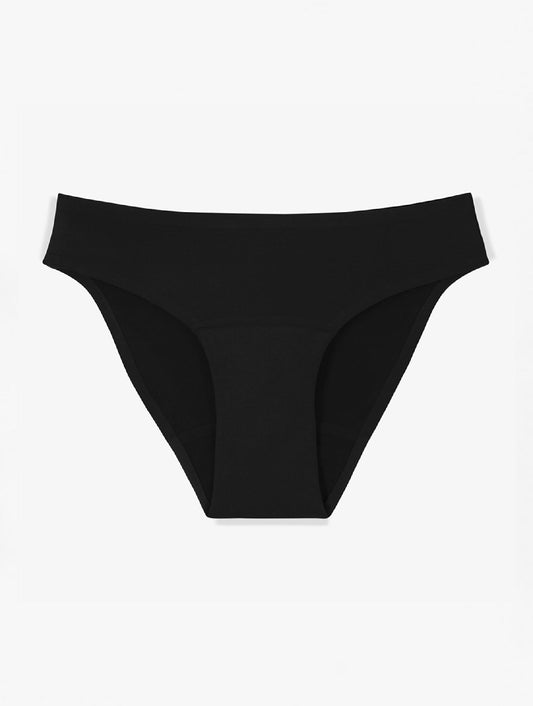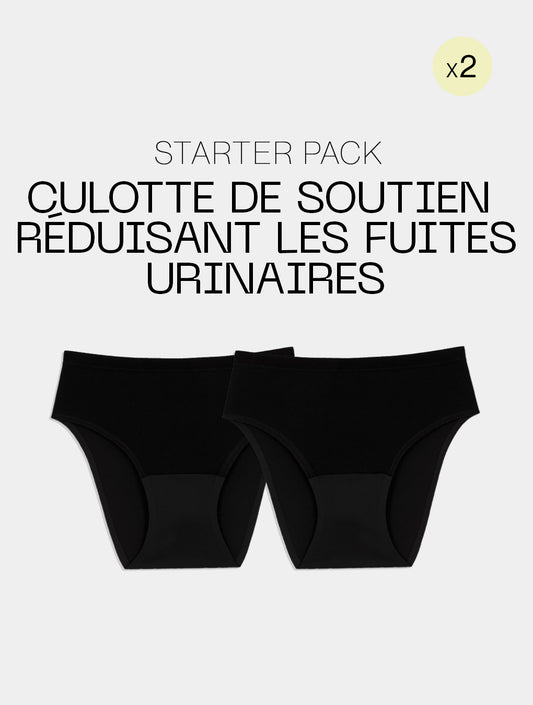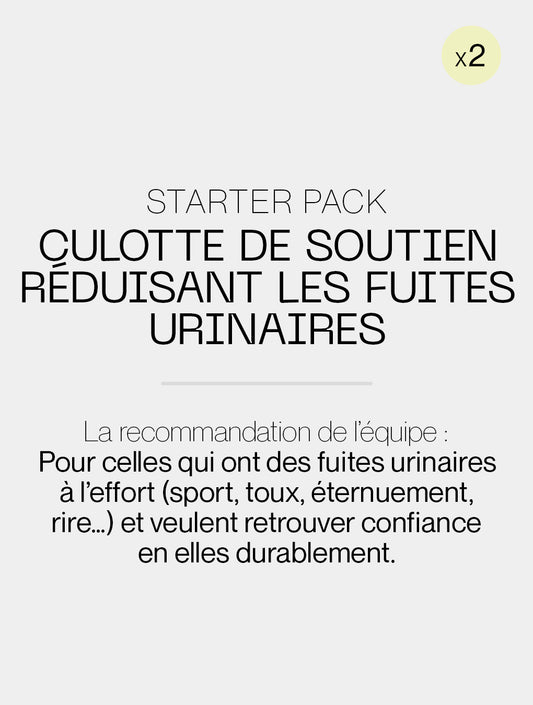Definition of urinary incontinence: its causes, types and solutions
By definition, urinary incontinence, an involuntary functional disorder, affects many people, mainly after the age of 50 and more frequently women. The problem can be occasional, chronic or even exertional. Despite the discomfort it can cause, solutions exist to improve the quality of life of those affected.
Definition of urinary incontinence
Urinary incontinence is defined as an involuntary loss of urine, regardless of its volume and frequency. It is a phenomenon that can cause some social discomfort. Several types of incontinence are listed, including stress incontinence, urge incontinence and overflow incontinence.
The frequency of urinary incontinence tends to increase with age. It particularly affects women, mainly due to anatomical specificities. Solutions exist to improve the condition of people affected by this health problem.
Anti-urinary leakage panties to better cope with incontinence?
Perhaps you have searched the Internet for anti-urinary leakage panties? It is more accurate to talk about support panties to help reduce urinary leakage.
As with its period panties , Smoon offers you a range of high-end, comfortable and ecological support panties. Have you also looked at our range of postpartum panties ?
The different types of urinary incontinence
Stress urinary incontinence
Stress urinary incontinence is characterized by involuntary leakage of urine when pressure is placed on the bladder, such as when coughing , sneezing, laughing, bending, or carrying heavy objects. It is the result of a relaxation of the muscles that close the bladder and the muscles of the perineum, often due to hormonal changes in women at menopause or after repeated childbirth.
In men, this incontinence is often linked to prostatectomy, an incontinence surgical procedure to partially remove the prostate as part of treatment for an enlarged prostate or cancer.
This condition significantly impacts the quality of life of those affected, but solutions exist. Perineal rehabilitation is the main treatment option. If symptoms persist despite medical treatment, surgical intervention may be considered.
Overflow urinary incontinence
Overflow urinary incontinence is a form of incontinence characterized by a constant flow of urine from the distended bladder. It is often due to an obstruction or imbalance in the nerve signals that control the bladder, preventing complete emptying.
Pathologies such as prostatic hypertrophy in men can be the cause of this type of incontinence. It can also result from chronic urinary retention which makes it difficult to start urinating and completely empty the bladder.
Symptoms of overflow incontinence include frequent or constant urination , abdominal pain, and an inability to urinate voluntarily.
Urge urinary incontinence
Urge urinary incontinence is a form of incontinence characterized by a sudden, irresistible urge to urinate, followed by an uncontrolled loss of urine. This type of incontinence is often linked to an overactive bladder, which contracts inappropriately.
Several causes can be at the origin of this disorder, including:
- urinary infections
- certain neurodegenerative diseases such as Parkinson's disease or multiple sclerosis
- or even prostate disorders in men.
Symptoms of urge incontinence include nocturia, or the need to get up at night to urinate, and nighttime incontinence.
Management of urge incontinence can include medications aimed at reducing bladder activity, but also perineal rehabilitation techniques and behavioral modifications. These may consist of adapting fluid consumption and rescheduling urination to reduce trips to the toilet.

Factors favoring the onset of urinary incontinence
Age and incontinence: a correlation?
There appears to be a correlation between age and urinary incontinence, with the latter being more common in older people. However, it is important to clarify that incontinence is not an age-related inevitability . In fact, it can appear at any age, even if its prevalence increases with aging.
Many causes can explain this correlation. First of all, aging is accompanied by histological and functional changes in the bladder which can promote the appearance of incontinence. In addition, certain age-related risk factors such as limited mobility or cognitive disorders can increase the risk of incontinence.
It should also be noted that age is not the only risk factor: other elements such as obstetric events (pregnancy and vaginal delivery), hysterectomy in women, or even prostatectomy in women. Man can also play a role.
The role of hormones in the onset of incontinence
Hormones play a vital role in regulating many bodily functions. Their imbalance can lead to various disorders, including urinary incontinence. One of the most common examples is the drop in estrogen during menopause . Estrogens are in fact involved in the tone of the tissues of the perineum and the urinary sphere, their reduction can therefore promote stress incontinence in women.
In men, the influence of hormones on incontinence is less obvious, but studies suggest a potential link with hormonal imbalances, particularly in relation to the prostate.
It is also worth noting that certain hormonal treatments can influence the onset of urinary incontinence. For example, estrogen replacement therapy may help reduce symptoms in some postmenopausal women.
However, the role of hormones in urinary incontinence is complex and can vary depending on many factors, including the individual's age, gender, and overall health.
Fecal incontinence: causes and solutions
How to stop involuntary loss of stools?
To stop involuntary stool loss, several options are available to you. A first approach is to adapt your diet : a diet low in residue, favoring rice, pasta, grilled meat and fish, can help reduce the frequency of stools and make them less liquid. Furthermore, regular non-intensive physical exercise , such as walking, swimming or cycling, is recommended to stimulate intestinal function.
Other solutions may be considered depending on the cause of the incontinence. For example, if it is caused by a particular medication, it may need to be replaced. In some cases, specific medications may be used to treat constipation or diarrhea associated with fecal incontinence . If the incontinence is linked to prolapse or intussusception, a consultation with a specialist may be necessary.
Local devices , such as anal tampons, can also be used to prevent unintentional loss of stool. However, they must be changed regularly to avoid infections and local irritations.
Finally, intestinal rehabilitation can be considered. It may include adopting a regular toilet schedule, using rectal suppositories to stimulate bowel movements, or wearing incontinence underwear.
In all cases, it is recommended to consult a healthcare professional to determine the cause of the incontinence and implement the most appropriate solutions.
Protections for fecal incontinence
Fecal incontinence, the involuntary loss of fecal matter, can be managed with different types of protection. Among the most common, we find complete diapers and anatomical diapers , recommended in particular in cases of double incontinence (urinary and fecal).
The anatomical diapers can also be adjusted according to the level of incontinence of each individual, and may require the use of support briefs for better support.
This is also why Smoon offers you support panties helping to reduce urinary leakage.
The choice of protection must in any case take into account several criteria:
- The person's height and weight
- Sex
- The quantity and frequency of losses
- The person's degree of mobility and autonomy
There are also protections for light to moderate fecal leaks, such as anatomical protections, diapers and specific underwear. These protections adapt to the nature and quantity of leaks as well as the gender of the person. Finally, for more severe cases, it is recommended to opt for disposable protections.
Incontinence in women: specificities and prevention
How to stop urinary leakage in women?
To stop urinary leakage, several options are available to women. Perineal rehabilitation is often recommended to strengthen the pelvic floor muscles. This can be done at home with Kegel exercises or with the help of a healthcare professional.
Behavioral modifications are also helpful. This may include adjusting fluid intake, avoiding certain irritating drinks like caffeine, or implementing a voiding schedule to reschedule urination.
For postmenopausal women, estrogen-based hormonal treatment , administered vaginally, can improve tissue flexibility and thus help reduce urinary leakage.
Finally, certain medications, such as anticholinergics , can be used to treat urinary incontinence due to bladder instability. They are effective and give good results quickly.
How to treat urinary incontinence in women?
Depending on the cause and type of urinary incontinence, different treatment options are available. Perineal rehabilitation , which aims to strengthen the pelvic floor muscles, is often the first choice. This can be done through home exercises or with the help of a healthcare professional.
The use of medication may also be considered. Anticholinergics are often prescribed to combat disordered bladder contractions. For stress urinary incontinence, local, oral or injectable treatments may be prescribed.
Surgical solutions are also possible. They may include the placement of reinforcement implants or synthetic strips depending on the pathology.
Finally, natural remedies such as the use of plants or essential oils can complement these treatments. It is essential to consult a healthcare professional to determine the best approach.
Incontinence in men: understanding and treating the problem
How to stop urinary leakage in men?
Stopping urinary leakage in men can be achieved through a combination of approaches. For some, lifestyle changes may be beneficial, such as losing weight, quitting smoking, or monitoring hydration. Behavioral therapies can also help manage symptoms, such as pelvic floor rehabilitation or learning bladder control techniques.
Physical exercise , especially Kegel exercises, can strengthen the muscles that control urination and thus reduce leaking. If these methods are not sufficient, drug treatments can be considered.
In cases of severe incontinence, surgical intervention may be recommended. It can target different organs such as the bladder, urethra or sphincter. In all cases, the choice of treatment will depend on the underlying cause of the incontinence.
Protection for men: what solutions?
For men suffering from urinary incontinence, several protective solutions exist. They vary depending on the degree of incontinence and the situation of each individual.
-
Men's shells : Ideal for light to moderate leaks, they are discreet and absorbent. They are worn with classic underwear.
-
Absorbent underwear : Best suited for moderate to heavy leaks, they are worn like ordinary underwear while still providing effective protection.
-
Full diapers : Recommended for major leaks or in cases of nocturnal incontinence, they offer maximum protection.
-
Incontinence briefs and boxers : They combine comfort, safety and discretion. They are particularly suitable for sporting activities or outings.
There are also specific protections for the night . Selecting the ideal protection will depend on the specific needs of each individual.

